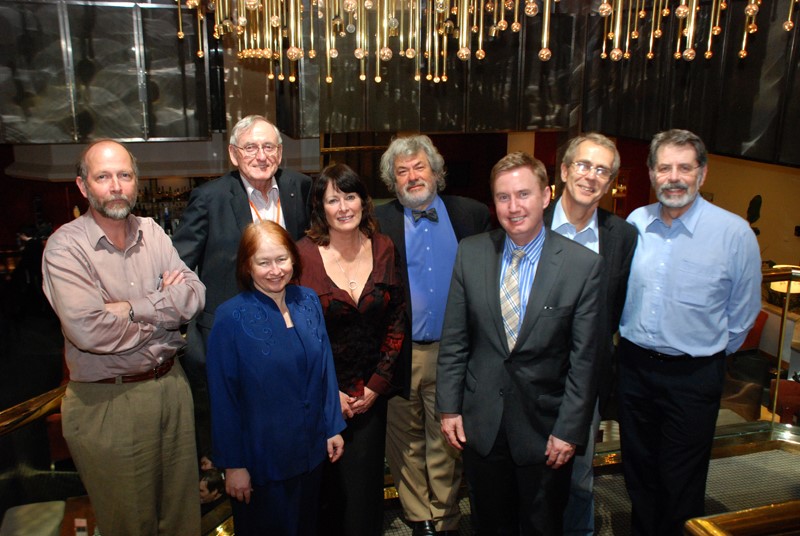History of ANZBMS
Download ANZBMS 25th Anniversary newsletter- The Development of ANZBMS. (Sep 2013)
The Australian and New Zealand Bone and Mineral Society (ANZBMS, www.anzbms.org.au, @ANZBMSoc) was established in 1988 with Prof. T. J. Martin as Founding President.
The ANZBMS is the principal professional body for biomedical scientists and clinicians involved in research and in management of patients in the field of metabolic bone disease and mineral metabolism in Australia and New Zealand. ANZBMS is dedicated to promoting excellence in bone and mineral research, fostering the integration of clinical and basic science, and facilitating the translation of our science to health care and clinical practice.
The ANZBMS council comprises the President, President elect, Past-President, Treasurer and Honorary Secretary and 5 councillors, with each of the regions (ie. New Zealand, Western Australia, Queensland, New South Wales and the Australian Capital Territory, Victoria and Tasmania, South Australia and the Northern Territory) represented by at least one councillor. The seven dots in our logo resemble Australian Aboriginal artwork and represent the Commonwealth Star, a seven-pointed star symbolising the Federation of Australia, with six of the points representing the states of Australia, while the seventh point represents the territories. The spine represents both bone and the silver fern of New Zealand.

Past Presidents of ANZBMS (Left to right: Ian Reid, Jack Martin, Rebecca Mason, Jillian Cornish, Ego Seeman, Peter Ebeling, Philip Sambrook, John Eisman)
Currently, ANZBMS has over 450 members, with 45% of these being clinicians and 55% biomedical scientists. ANZBMS is affiliated with the Australian Society of Medical Research and the International Federation of Musculoskeletal Research (IFMRS). The ANZBMS has a number of sub-committees which play an important role in achieving the society’s goals and provide an excellent opportunity for members to become involved in the society. These include the Clinical Practice, Therapeutics, Densitometry, Research, Finance, Communications, Meetings and Early Career Investigator Committees.
One of the key objectives of the ANZBMS is the dissemination of new knowledge in bone and mineral metabolism through our Annual Scientific Meeting (ASM). Held annually since 1990, the location of the meeting is shared between each of the ANZBMS regions on a rotating basis. Our ASM’s have been very successful, with high quality presentations from national and international speakers in biomedical, clinical and translational research, vigorous discussion amongst attendees, ample networking opportunities and a high participation rate amongst our membership. Our ASM also provides a forum in which the ANZBMS can achieve another of its key objectives, that is to nurture and develop the future generations of basic and clinical scientists. The best abstract submissions by young investigators in both the clinical and biomedical sciences are given prominence in the program in dedicated award sessions named after eminent ANZBMS members who mentored many members of the society, namely the Roger Melick and the Christopher and Margie Nordin Young Investigator awards. The esteemed Career Achievement Award recognises an individual with outstanding and major scientific or clinical contributions, and excellence in teaching and service to and within the bone and mineral field. Through the ASM, ANZBMS often engages with other Societies by holding joint meetings, such as the IFMRS, the Japanese Society for Bone and Mineral Research, the Endocrine Society of Australia, the Society of Reproductive Biology, the Australia and New Zealand Orthopaedic Research Society and the Molecular and Experimental Pathology Society of Australasia.
As part of our commitment to advance the education of clinicians and allied health professionals in the nature of and management of diseases impacting upon the skeleton, ANZBMS provides a number of courses and webinars. The densitometry course is a two day lecture and workshop intended for both medical practitioners and technologists which covers the pathophysiology of osteoporosis, as well as the principles and practice of bone density and body composition measurement. The course is held once or twice a year depending on demand. The Advanced Clinical Postgraduate Meeting held every two years, is targeted at Specialists training in the management of bone and mineral diseases and is suitable for trainees in numerous disciplines including endocrinology, rheumatology, rehabilitation and geriatric medicine, orthopaedic surgery as well as general medicine.
One of our more recent initiatives has been the establishment of the Early Career Investigator Committee (ECIC, @ANZBMS_ECIC), a designated committee for current higher degree and current researchers within 10 years from the award of a higher degree (e.g. PhD/Masters). Since its formation in 2017, the ECIC has gone from strength to strength working in collaboration with the ANZBMS senior committee to foster the active engagement and professional development of early career investigators within the ANZBMS. The ECIC co-chairs attend ANZBMS council meetings as ex-officio members and many of the ECIC members also participate in ANZBMS sub committees. The ECIC are a passionate and enthusiastic team of talented scientists and clinicians who have implemented a number of important initiatives including organising career development sessions, networking events, a Clinical Cases session at the ANZBMS ASM, a quarterly ECIC newsletter, exchange programs and webinars.
By Rachel Davey, Councillor and Chair of ANZBMS Communications Committee (Posted 2021)
